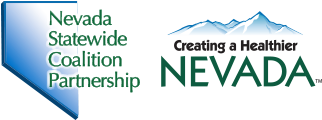India pharmaceutical giant Dr. Reddy’s Laboratories, recently settled a case with the U.S. Justice Department regarding prescription drug packaging that had not undergone proper testing for child safety, as required by the U.S. Consumer Product Safety Commission.
In a statement, the company said that, while it disagreed with the allegations, “in order to avoid any unnecessary costs and the distractions of prolonged litigation, the company has chosen to settle the matter for five million dollars.” Dr. Reddy’s said that is was not aware of any reports that any child who gained access to these products or that any of its products caused children harm as a result of the packaging.
Patient safety experts say that pharmacists should take every opportunity to remind parents to store medications out of reach of children.
Michael Cohen, RPh, MS, President, Institute for Safe Medication Practices, said that pharmacists should distribute educational materials from the CDC to remind parents to store drugs “Up and Away and Out of Sight.”
“That also goes for the refrigerator as kids sometimes get into that. Also, remind parents to replace that safety cap. Lots of times they don’t screw it back on properly,” said Cohen. He added that the CDC has a website devoted to medicine safety and there is also a useful resource called the Protect Initiative, for which ISMP is a supporting organization:
“It’s not just parents! It’s also grandparents and especially Grandma. There is an actual situation known as “Granny Syndrome” where grandma forgets she has her medicines in her handbag. Kids get into that,” said Cohen.
Cohen told Drug Topics that he worries about some of the liquid bottle closures. For example, pharmacists commonly sell a product called EZ Dose that has a Christmas tree, a cone-shaped bottle adapter used to help fill oral syringes.
“Nice, but Mom usually keeps this in the bottle in between doses, which is very dangerous because it defeats the whole idea of a safety cap. Kids pull it right out of the bottle and drink the medicine,” said Cohen.
Instead, Cohen recommends pharmacists plug in flow restrictors that fit right into the bottle neck. These are used in conjunction with an oral syringe, which he said pharmacists should also sell.
Cohen said that some pharmacists have already adopted these restrictors and have these for various bottle neck sizes. “The oral syringes are the best way to measure liquids for anyone. We just gave an award to H. Shonna Yin, MD, MS, a pediatrician at New York University School of Medicine, for her work showing that parents make fewer errors when the directions for liquid medications are expressed in mL, not teaspoons or teaspoons and mL.”
Yin’s work, Cohen said, was incorporated in an American Academy of Pediatrics Policy Statementrecommending mL-only dosing for orally administered liquid medications.
“She also identified that fewer errors are made when the dosing device most closely matches the volume of the actual dose. Pharmacy owners, including chains, need to take notice if they haven’t already,” Cohen said.
[su_button url=”http://drugtopics.modernmedicine.com/drug-topics/news/pharmacists-play-key-role-protecting-children-prescription-meds?platform=hootsuite” target=”blank” background=”#0a3853″ icon=”icon: adjust” icon_color=”#ffffff”]Click Here To Read More[/su_button]
